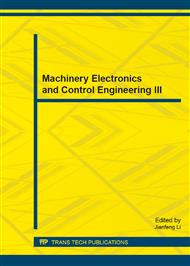[1]
W.P. Shor: Polynomial-time algorithms for prime factorization and discrete logarithms on a quantum computer, Proc. the 35th Annual Symposium on Foundations of Computer Science, IEEE Computer Society Press, p.124–134 (quant-ph/9508027), Nov. (1994).
DOI: 10.1109/sfcs.1994.365700
Google Scholar
[2]
R. C. Merkle and M. E. Hellman: Hiding information and signatures in trapdoor knapsacks, IEEE Trans. Inf. Theory IT-24(5), p.525–530, Sept. (1978).
DOI: 10.1109/tit.1978.1055927
Google Scholar
[3]
A. Shamir: A polynomial time algorithm for breaking the basic Merkle-Hellman cryptosystems, Proc. Crypto'82 LNCS, p.279–288, Springer-Verlag, Berlin, (1982).
DOI: 10.1007/978-1-4757-0602-4_27
Google Scholar
[4]
J.C. Lagarias andA.M. Odlyzko: Solving low-density subset sum problems,J. Ass. Comput. Mathvol. 32, no. 1, pp.229-246, Jan. (1985).
DOI: 10.1145/2455.2461
Google Scholar
[5]
M.J. Coster, A. Joux, B.A. La, Macchia, A.M. Odlyzko, C.P. Schnorr and J. Stern: An improved lowdensity subset sum algorithm, Computationmal Complexity, (1992), vol. 2, pp.97-186.
DOI: 10.1007/bf01201999
Google Scholar
[6]
B. Chor and R.L. Rivest: A knapsack-type public key cryptosystem based on arithmetic in finite fields, IEEE Trans. Inform. Theory, 34, (1988).
DOI: 10.1109/18.21214
Google Scholar
[7]
S. Vaudenay: Cryptanalysis of the Chor-Rivest Cryptosystem, In Journal of Cryptology, (2001), vol. 14, pp.87-100.
DOI: 10.1007/s001450010005
Google Scholar
[8]
Weidong Zhang, Baocang Wang and Yupu Hu: A New Knapsack Public-Key Cryptosystem, Fifth International Conference on Information Assurance and Security, (2009), pp.53-56.
DOI: 10.1109/ias.2009.300
Google Scholar
[9]
K. Kobayashi, K. Tadaki,M. Kasahara and S. Tsujii: A knapsack cryptosystem based on multiple knapsacks, International Symposium on Information Theory and its Applications, (2010), pp.428-432.
DOI: 10.1109/isita.2010.5649307
Google Scholar


